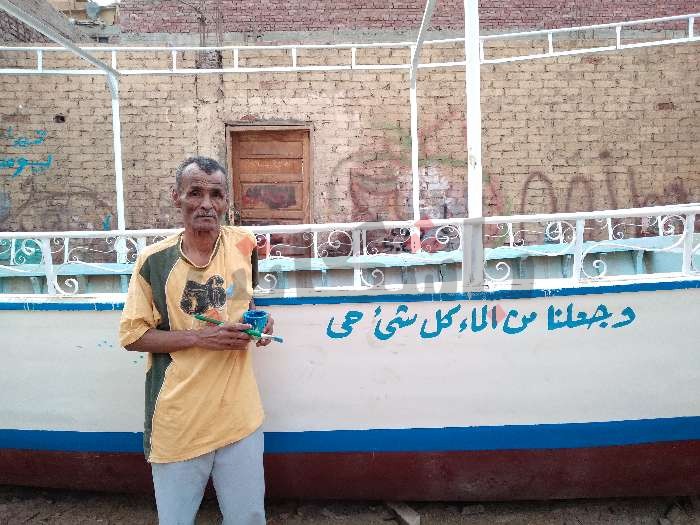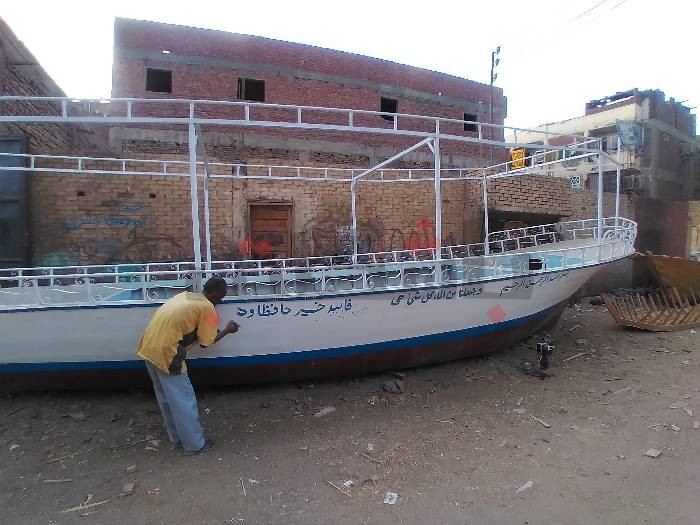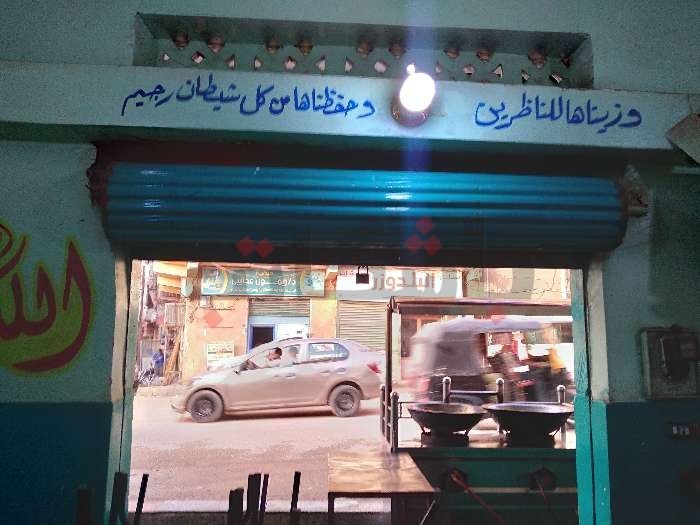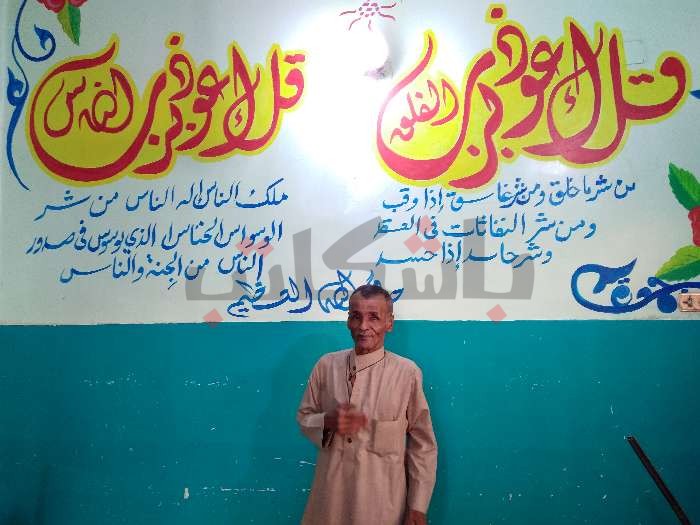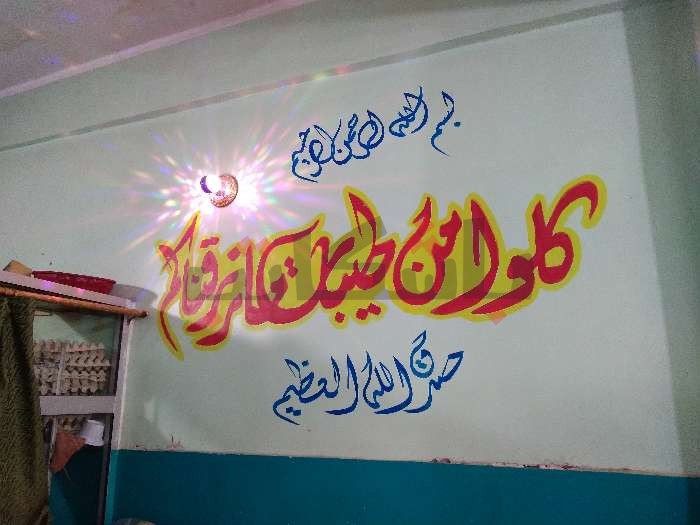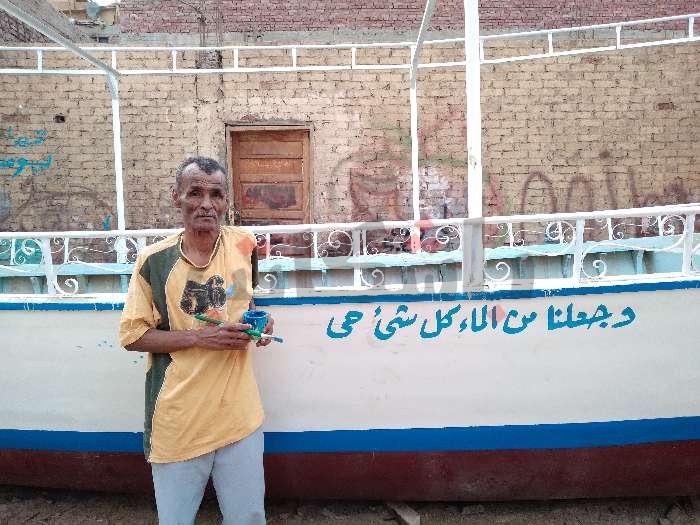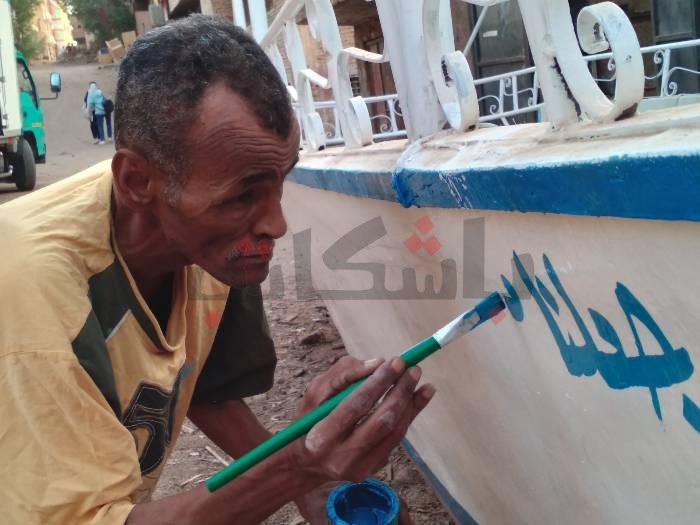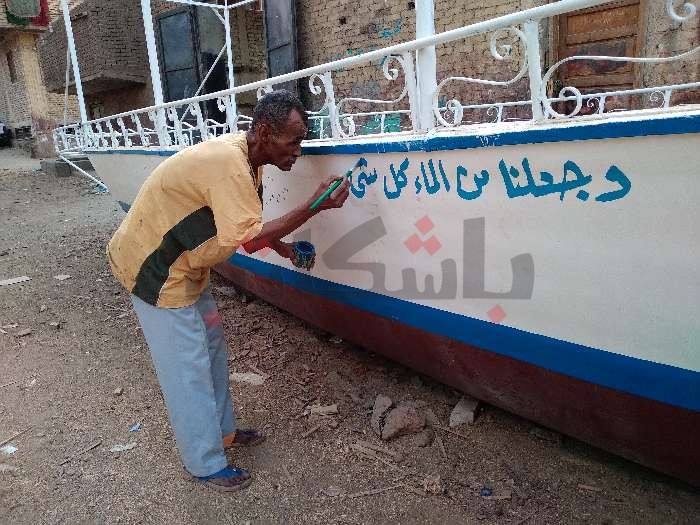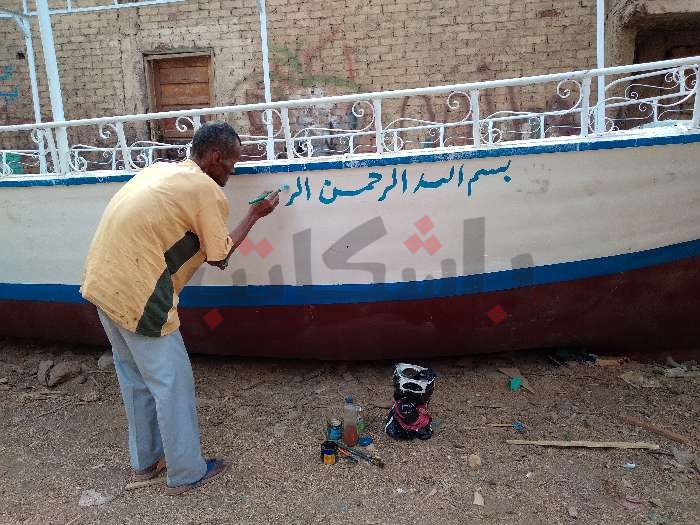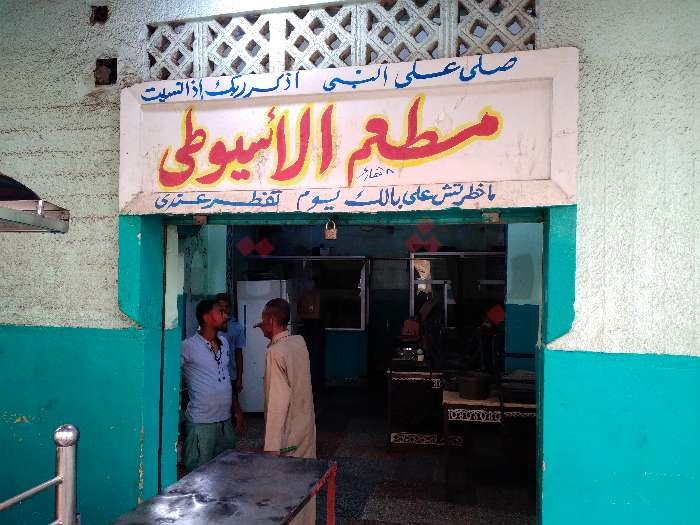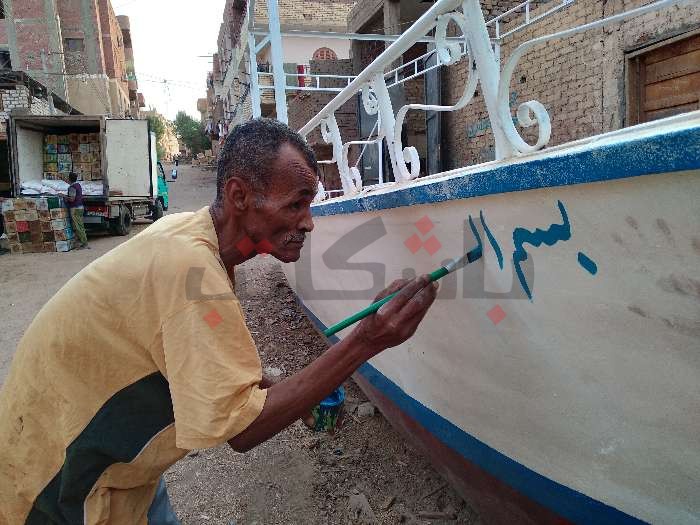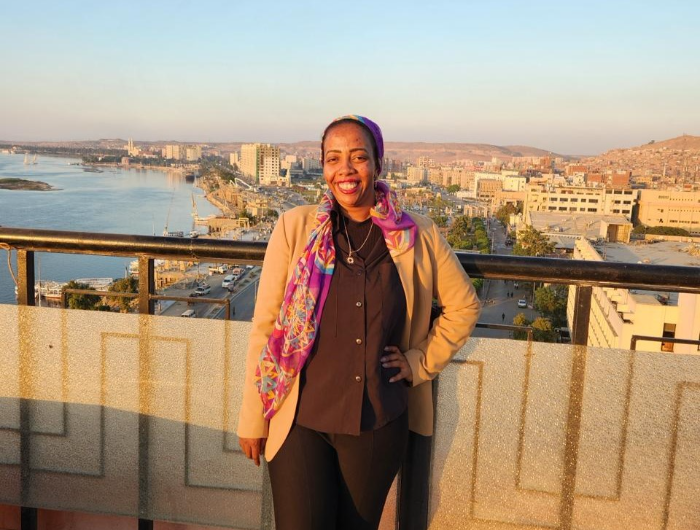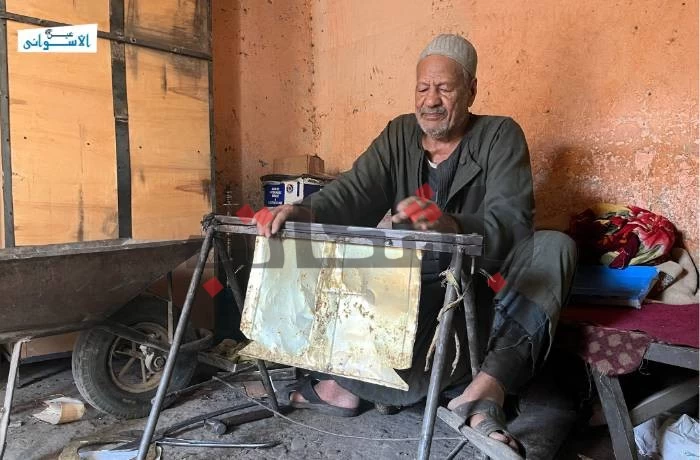Despite the prevalence of modern printing methods and graphic designs for storefronts and signs, 63-year-old Mahmoud Al-Ansari has not abandoned his beloved profession. He works as an employee in the morning, and in the evenings, he picks up his tools and starts his work as a calligrapher.
Al-Ansari stands before a marked wooden piece with a specially calibrated stick for measurement, determining the number of lines for writing. Without any pre-shadowing, he dips his brush into colors and begins to inscribe letters and numbers, referring to a nearby sheet containing the sign details agreed upon with its owner.
Mahmoud, a Nubian from the village of "Alambrakab" in the Nasr Al-Nuba district, has dedicated over 40 years to drawing and writing shop signs and home facades. His work includes crafting congratulatory phrases for occasions like Hajj, such as "May your pilgrimage be accepted, and your sins forgiven," as well as inscribing tombstones.
He pays no mind to the proliferation of computer-printed signs with lights, as hand-drawn signs still have their owner, and the demand for them persists, as he explained.
He says confidently: "Those who have tried both printed and hand-drawn signs know their worth and come back for the latter," he confidently states. He believes that despite the technological advancements in shop signs, there is still a demand for hand-drawn ones.
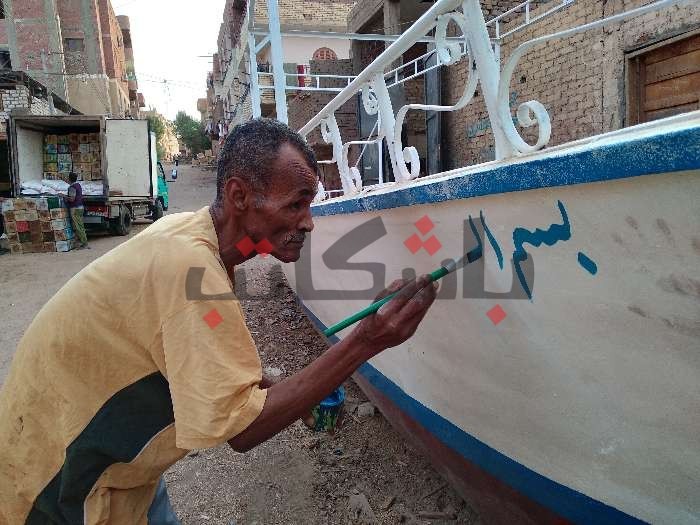
He adds: "The hand-drawn one lasts longer and is better, unaffected by time or the sun that fades colors in printed signs. The hand-drawn signs are crafted on beloved pressed wood, and a sign can live for six to ten years," he explains.
Al-Ansari acquired this experience since his childhood. His interest in calligraphy emerged in elementary school, where he assisted his teachers in writing lesson plans. During his preparatory stage, his teachers noticed his beautiful handwriting.
And he reflects on this period, saying: "I received attention from my art teachers at school, as they helped me refine my handwriting. While walking in the street, I would observe shop signs, movie posters, collect newspapers, and start imitating the fonts I saw to write like them. Later, I bought books on calligraphy to distinguish between each style, such as Persian, Diwani, and Ruq'ah scripts. When I reached the diploma stage, I began writing school boards. Eventually, I turned calligraphy into a profession alongside my primary job as an employee at the Veterinary Medicine Directorate," he narrates.
Over forty years, I've experienced various types of drawing tools and styles, he explains. "We used to draw with brushes made from palm fibers, using inks. We crafted our tools by hand, and the brushes were made from goat hair, which lasted longer than the current ones. They were characterized by ease of use, but their prices have increased over time," he reminisces.
Al-Ansari doesn't find difficulty in the calligraphy profession, except when asked to draw from a high place, such as a balcony in a tall building.
While Mahmoud observes printed signs containing linguistic errors, he firmly states: "The most important thing in the profession is to adhere to the correct linguistic rules when writing. I strengthen myself by reading the Quran and writing poetry," he emphasizes.

The customer is involved in every stage of the sign's execution, Al-Ansari says: "I start by discussing with the customer what needs to be written, the locations for the writing, and choosing colors that suit the sign. The selection of colors is crucial as some colors fix well while others, like red, may not. Therefore, the choice of colors varies based on the surface being used, such as wood, canvas, or plaster. The selection of the font depends on the size of the sign, considering the distance and the required words," he explains.
Regarding the required cost, he clarified: "The cost of the drawing varies based on the piece to draw on. The price per meter of canvas used to be three pounds, now it's 30 pounds. Drawing on wood is more expensive, and its cost is 250 pounds," he stated.
At the end of his task, Mahmoud takes pride in what he has produced, then says: "There are still those who seek to learn, but it's less now because there is a greater demand for printed signs," he remarks.
